Ball Bearing and Positioning Swivels: What They Are and How They’re Used
A swivel is a piece of hardware used to accommodate load movement and twisting and is particularly useful in situations where a load may sway or spin. Positioning swivels and ball bearing swivels have slightly different functions, parts, and capabilities.
If you’ve ever had trouble rigging an unruly load, you probably know how useful a ball bearing swivel or positioning swivel can be in managing load movement. Or maybe you’ve never used a swivel before, but adding one to your rigging assembly could make some of your lifts easier and safer to manage.
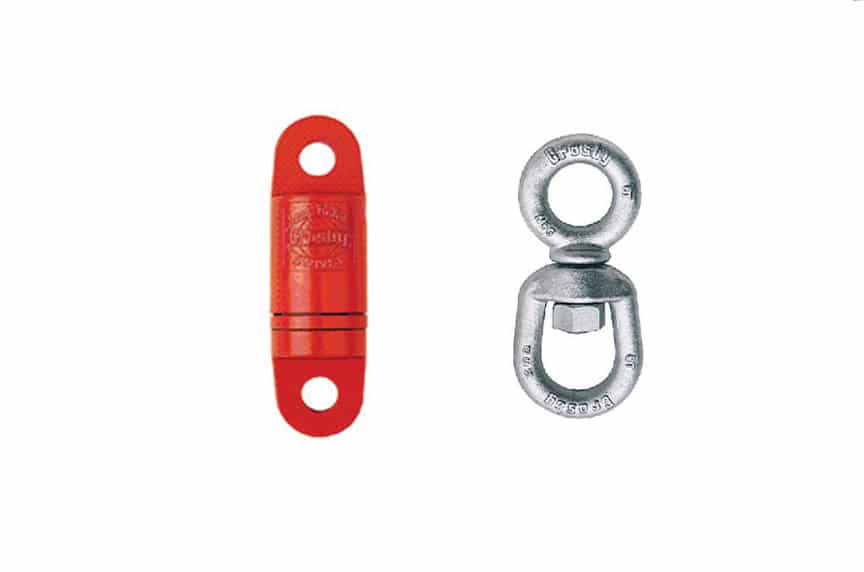
A swivel is a type of rigging hardware that is used to position a load and/or swivel under the weight of a load. Despite being so simple, there aren’t many sources out there that break down swivels, their purpose, types, and other basic information.
If you are newer to rigging or just haven’t been introduced to swivels yet, continue reading this article and you might benefit from the following information:
- What a swivel is
- The basic types of swivels
- Swivels markings / identification
- Swivels removal from service criteria
What is a Swivel?
Swivels are used for load positioning and/or swiveling under load to accommodate load movement and twisting. They’re essentially made up of two end fittings connected at the center.
They’re particularly useful in situations where a load may sway or spin. These situations might include:
- When using wire rope in a lift, the wire rope construction can cause the load to twist as it’s lifted.
- Environmental factors – Any time that wind is a factor.
- It’s possible for load twisting to be present in chain and synthetic slings as well.
Similar to the configuration of end fittings on a turnbuckle, these swivels may have jaw, eye, or hook ends depending on what type of load they may need to connect to.
You may have also heard the term “swivel hook.” This refers to a type of hook that contains a bearing or bushing at the top of the hook that allows it to swivel. Another common term, swivel hoist ring, refers to a type of swivel used as a securement point that pivots and swivels during an overhead lift.
Positioning Swivels
A positioning swivel—one without a ball bearing—is essentially two end fittings connected by a thread and nut. These types of swivels are meant for positioning a hook onto a pick point. Positioning swivels are not meant to swivel while under load. So, they can rotate to properly connect the load to avoid stress on other parts of the rigging, but they cannot rotate under a load once it has been lifted.
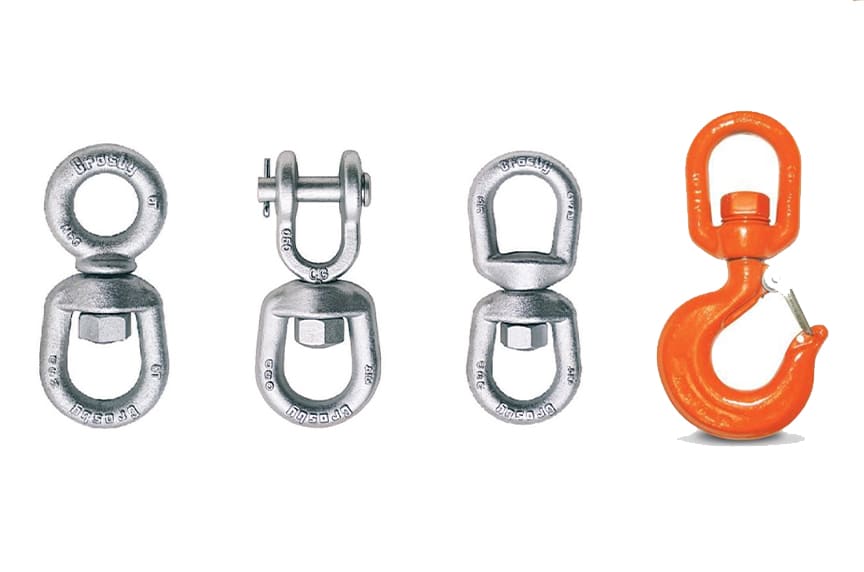
You may also hear positioning swivels referred to as forged / stainless steel swivels, chain swivels, regular swivels, or swivel hooks, to name a few. These terms refer to various swivel types and materials.
Main Parts of a Positioning Swivel:
Nut – the nut screws onto the thread to secure the device.
Thread – the threaded bolt is typically manufactured as a structural part of the lower end fitting. It’s screwed into the top end fitting and secured by the nut.
End fittings – like a turnbuckle, the end fittings of a swivel can be a combination of a hook, jaw, or eye.
Ball Bearing Swivels
A ball bearing swivel—also known as a load swivel—is used both for load positioning as well as allowing for rotation while under load weight. Swiveling under load weight helps to control load movement during the lift and prevent twisting and kinking in the rigging.
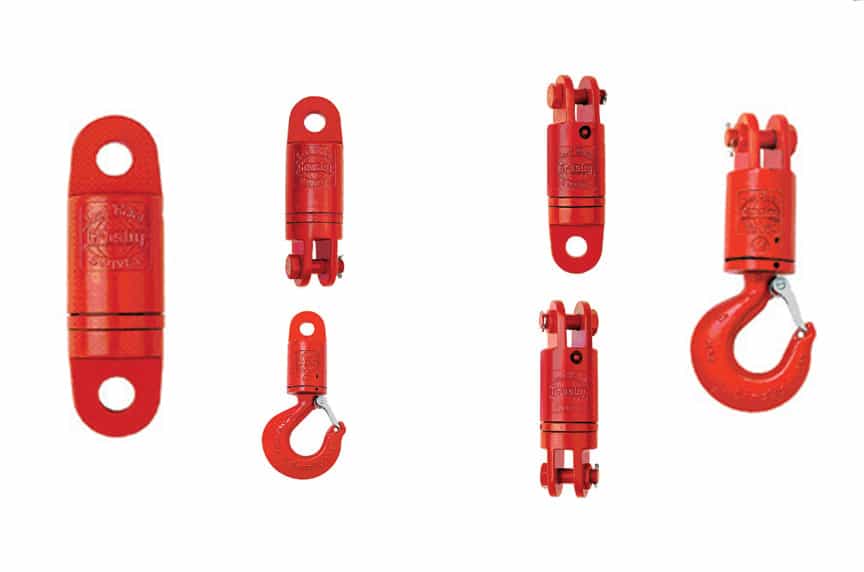
The ball bearing present within the body of the swivel makes it possible for the top and lower end fittings to swivel freely under load.
Main Parts of a Ball Bearing Swivel:
Bushing – the part of the swivel in which the bearing resides and each end fitting is attached.
Bearing – the bearing(s) inside of the swivel—either a ball or tapered roller bearing—are lubricated and sealed. This allows the top and bottom end fittings to swivel seamlessly under the load weight.
End fittings – like a turnbuckle, the end fittings of a swivel can be a combination of a hook, jaw, or eye. There is also the possibility of a thimble end fitting.
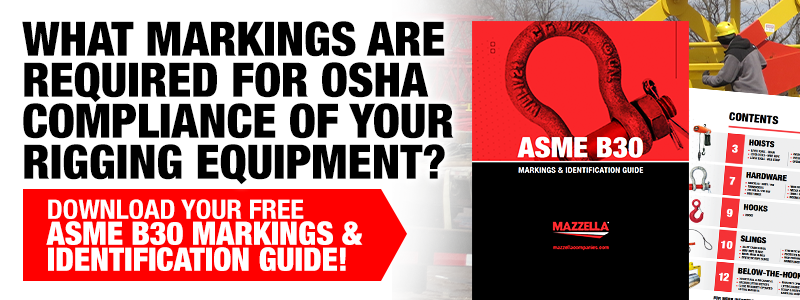
Swivels Markings / Identification
According to ASME B30.26 Rigging Hardware, each swivel shall be durably marked by the manufacturer to show:
- Name or trademark of manufacturer
- Size or rated load
- Grade, if required to identify rated load
Removal From Service Criteria
During the course of an inspection, remove swivels from service if any of the conditions listed in ASME B30.26 Rigging Hardware are present:
- Missing or illegible identification
- Indications of heat damage, including weld spatter or arc strikes
- Excessive pitting or corrosion
- Bent, twisted, distorted, stretched, elongated, cracked, or broken load-bearing components
- Excessive nicks or gouges
- A 10% reduction of the original or catalog dimension at any point
- Evidence of unauthorized welding or modification
- For swivels, lack of the ability to freely rotate when not loaded
- For swivels, loose or missing nuts, bolts, cotter pins, snap rings, or other fasteners and retaining devices
- Other conditions, including visible damage that cause doubt as to continued use
If any of the above conditions are present, the device must be removed from service and shall only be returned to service if/when approved by a qualified person.
Wrapping It Up
The basic role of a swivel is to position a load and/or swivel under the load’s weight, depending on the type of swivel you are using. They’re particularly helpful in maintaining load control and/or preventing a load from twisting during a lift.
There are two basic types of swivels, positioning swivels and ball bearing swivels. Both are capable of positioning a load, but only ball bearing swivels are rated to swivel under a load’s weight.
Like any other piece of rigging hardware, be sure to abide by relevant ASME standards and removal from service criteria.
At Mazzella, we offer a full inventory of rigging equipment including shackles, slings, hooks, and much more. We stock and distribute swivels from:
- Crosby
- Esmet
- Miller Lifting Products
If you are interested in learning more or scheduling a consultation for your next lifting project, contact one of our lifting specialists today.
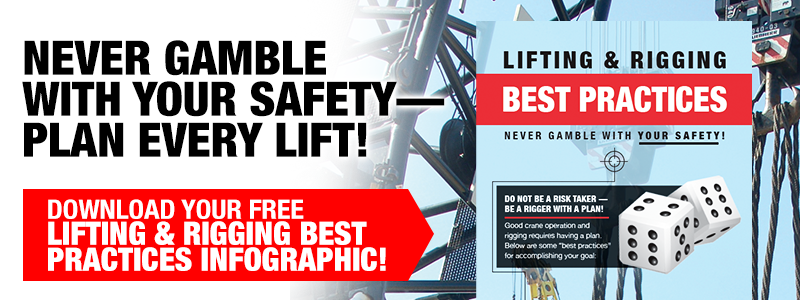

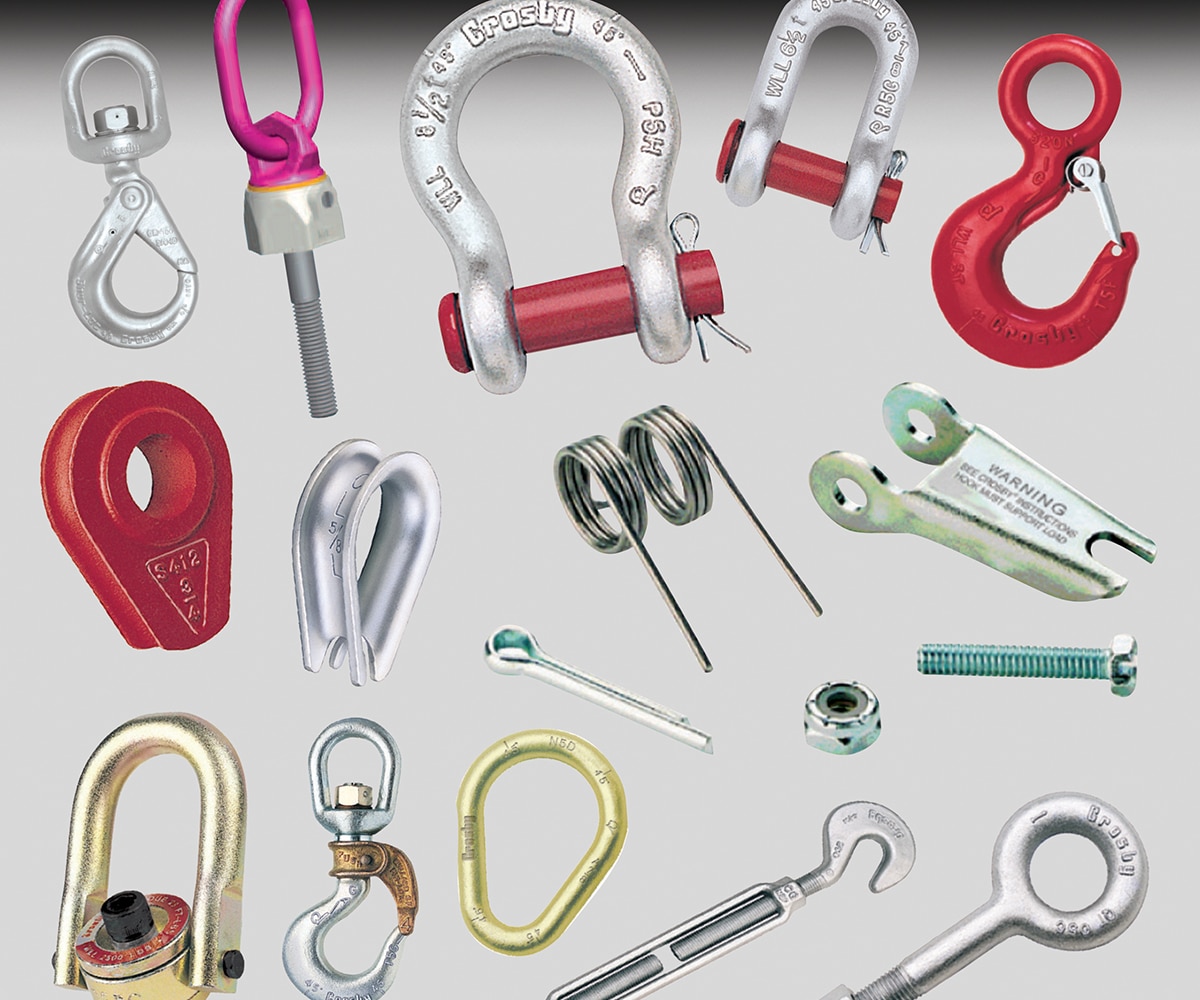
Rigging Hardware
Are you looking for access to a complete inventory of rigging and lifting products from the largest manufacturers in the world?
Contact us if you need shackles, hoist rings, eye bolts, hooks, master rings, links, turnbuckles, and more!
Learn more about lifting and rigging hardware!
Copyright 2020. Mazzella Companies.
